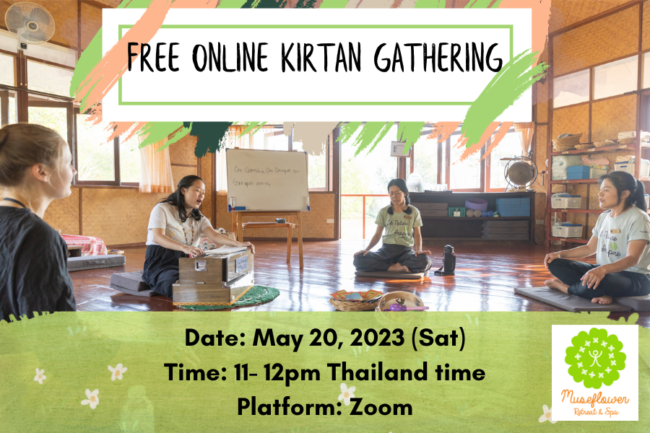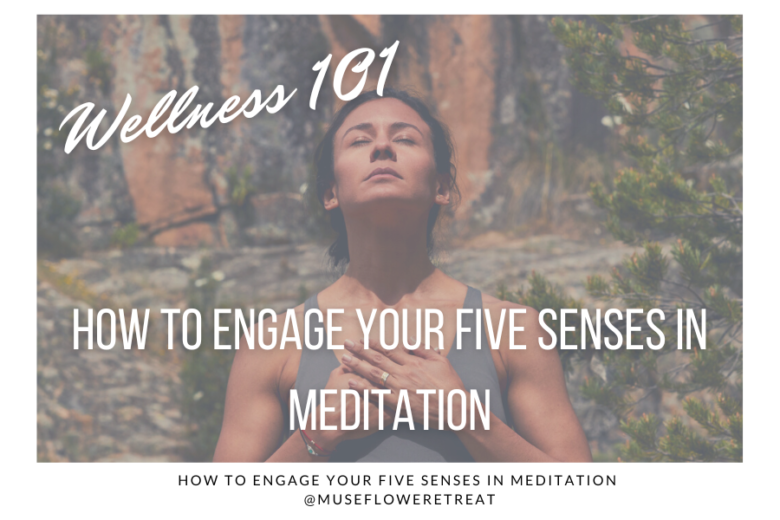When we think of meditation, our minds usually paint a picture of people sitting cross-legged, back straight with their palms on their knees, looking calm and peaceful.
We already know the many benefits of meditation, such as boosting our immune system, lowering stress, and increasing feelings of happiness and well-being. Meditation is indeed one of our best superpowers as long as we are willing to go do it.
Now the question is how to get started with meditation? A lot of people just assume that by sitting down, preferably in a cross-legged position, closing their eyes, and focusing on their breath, that their minds can suddenly be quiet with no thoughts.
Well, you wouldn’t assume that just because someone can hold a spatula and a frying pan, that they can cook up a decent meal right?
Just like cooking is a skill, so is meditation. And there are also many meditation techniques out there, same as cooking.
In my previous blogs, I have shared tips on how to get started with meditation, how to make meditation easy for busy people, how to meditate regularly, and 5 meditation classes that don’t involve sitting.
In today’s blog, I’d like to share with you how we can engage our five senses to help us meditate. Yes! That’s right. Instead of withdrawing our senses to focus within (which is also one meditation technique), we can rely on our five senses to bring our wandering mind back to focus and allow our senses to guide us to the place of stillness and calm within.

Visualization meditation has helped me a lot at the beginning of my own meditation journey. When I first started meditation, I was only focusing on counting my breaths and soon I lost focus. I didn’t experience any benefits that I expected from meditation so I gave up.
Later on I had a chance to experience a visualization meditation with a teacher, and I realized that I was able to focus longer and I felt more relaxed afterwards. I was also able to lie down during the practice instead of sitting up with no back support which was something that I struggled with.
Visualization meditation is usually offered as a guided meditation, so it is easy to just relax, close our eyes and follow the voice of the guidance and to engage our imagination.
This type of meditation is great for visual learners and anyone who has an active imagination and can easily conjure up images in their head.
Try it out:
This Waterfall meditation that I posted on Youtube many years back is a visualization meditation that guides your imagination to go under a waterfall and feel the water cleansing your body and energy within.
2. Sound – Chanting Mantras
There are many ways to engage the sense of sound in meditation, for example we can play calming music in the background during a visualization meditation, immerse in a relaxing sound bath with the singing bowls and gongs, or we can also chant mantras to create the sound itself.
The human voice is the most ancient instrument out there to create sound. As we chant a mantra, such as Om/Aum (which is the primordial sound of creation), our energy starts to harmonize with the sound that we are creating.
I also find that chanting mantras can serve as an anchor to help us feel more grounded and centered.
This type of meditation is great for auditory learners, anyone who is sensitive to sounds, and anyone who feels scared or timid to express their own voice. The more we practice with chanting, the more confident we become in expressing our voice and our truth.
Try it out:
If you have been too shy to chant Om/Aum at the beginning of your yoga class, try it out at home. There is really no right or wrong way to chant it. You can chant 3 times or more, and really hear yourself doing it instead of letting your mind wander off. Afterwards, sit in silence just for a couple minutes to feel the vibration of the chant in every part of your body.

3. Touch – Finger labyrinth / Mudra
Mudra means “seal” in Sanskrit, and it means bringing our fingers in certain hand gestures to evoke different energy sensations in our body. The most common mudra that people know is the Chin or Jyana Mudra, which is basically the tips of the thumb and index finger touching to form a circle, with the rest of the fingers relaxed and open, palms facing up.
Mudra doesn’t just look nice in meditation photos. Different mudras bring up different feelings or sensations. Bringing a sense of touch in meditation can help us go deeper and longer in our practice.
Another way to engage our sense of touch in meditation is through finger labyrinth walks. You can refer to my previous blog here on “What is a labyrinth and how to walk a labyrinth” for more information about labyrinths.
Finger labyrinth is essentially a labyrinth pattern printed on paper (or other material such as wood), and instead of using our legs to walk a physical labyrinth, we use our fingers instead. The experience is as powerful as walking a physical labyrinth, and for me personally I love using the finger labyrinth since I can do it at home, and it has been a great tool for days when I don’t feel like sitting silently in meditation.
This type of meditation is great for kinesthetic or tactile learners, and finger labyrinth is especially great for anyone who feels overwhelmed and stressed out and does not feel like sitting still.
Try it out:
There are many mudras out there besides Jyana mudra, and one of them is Prithvi mudra which activates and balances our earth element within and helps us to feel more grounded. Next time when you are sitting in meditation, you can try this mudra out by touching the tips of your thumb to your ring finger while relaxing the other fingers (see more information about this mudra here on yogajala.com). Observe and notice what feelings and sensations arise when you are practicing with this mudra.
4. Smell – Using essential oil
Breathing is always the main anchor point of our awareness during meditation, because it is something that we always have and something that we cannot lose.
For most beginners, it is quite easy to lose our concentration observing our breaths. The monkey mind starts to get busy in thinking again, and instead of having no thoughts, our mind is suddenly flooded with nothing but thoughts.
Relax when this happens. It will not be the first time nor the last time, and pretty sure it happens to everyone (or most I think).
Meditation is not about having no thoughts; meditation is about learning how to observe our thoughts and not get attached to them just like we are watching a movie.
Since breathing is one of the most important things in meditation (and just in general), I love to use essential oil to allow me to breathe deeper. You can also use scented massage oil, scented candles, room mists or essential oil diffusers to fill your meditation space with your favorite scent.
This type of meditation is suitable for anyone who loves scent.
Try it out:
At the beginning of any meditation, you can pick an essential oil that you like. You may have a go-to one just for meditation, or pick one based on your mood of the day which is always fun. If you are allergic to essential oils or have sensitive skin, please make sure to first dilute your essential oil in base oil. If not, you can place one drop on the center of your palms and rub your hands till they are warm. Then open your palms and bring them a couple inches away from your face, and inhale deeply. Allow the scent of the essential oil to bring your mind back to the present moment whenever your mind starts to wander off.

5. Taste – Cacao and Tea ceremony
Even though cacao and tea ceremonies may not be considered as meditation formally, when we drink cacao and tea mindfully, we actually engage all our senses (with taste being the predominant one being engaged), which can help us turn inward and drop into the place of silence and stillness within our heart.
I have explained what is a Cacao ceremony and how to drink cacao at home in my previous blogs. A tea ceremony is where one can watch how tea is prepared in a ritualistic way and to drink tea in silence, and by doing so, we enter this place of stillness and quiet within. The reason why Cacao and tea are used in ceremonies is because of their medicinal effects on both our physical and energetic bodies.
During these ceremonies, our mind becomes solely focused on the act itself and all other thoughts start to melt away.
This type of meditation is great for anyone who feels restless easily in the more traditional form of meditation (such as breathing and observing our thoughts), and who struggles to stay focused on images or sound for an extended period of time.
Try it out:
It’s best to join a group Cacao ceremony or tea ceremony to begin with, as the communal aspect of the ceremony is also what makes this spiritual practice unique. But it is easy to prepare and drink Cacao as a spiritual practice at home (read my blog here for more information). You can also drink your favorite cup of tea or coffee or water mindfully in the morning as part of your meditation practice. It doesn’t have to be long either, just consider this time as sacred me time to recharge yourself.
Conclusion
Whether you have tried meditation before or a total beginner and believed that meditation is not for you, give meditation a second chance! Like I’ve always said, there are many styles of meditation out there, and finding the right style that lands for you is like finding the right partner.
If the style of meditation that you tried is too boring, try another one. Only when we find a meditation style that we truly love and enjoy, then we will able to go back to it day by day to build it up as a regular meditation practice. And that’s when we can truly reap the many benefits of meditation.
How about you? What style of meditation do you like best?
Feel free to share with me here, I’d love to hear from you.

In May we will be opening up our monthly online kirtan gathering that we do with our Thailand Bhakti Yoga Study Group participants for all our newsletter subscribers to join.
Kirtan (devotional chanting) opens our hearts and allows us to connect with the love that is within and all around us. It’s a light-hearted time to sing, express your voice and have fun. We will be singing Sanskrit mantras mainly.
No previous experience of anything is required, just come with an open mind and an open heart. Registration is required (the event is free) and the gathering will take place over Zoom.
Please note that recording is not available for this event, so please attend our gathering live.




